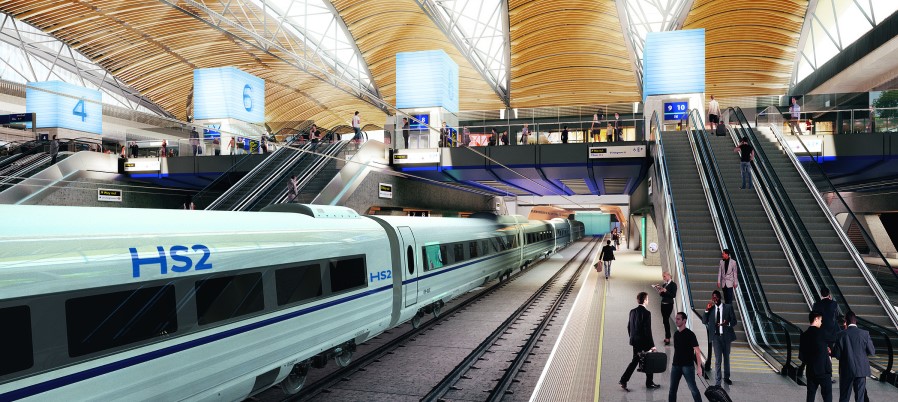🕒 Article read time: 3 minutes
HS2 could create substantial extra freight capacity, report reveals
Advertorial Content

HS2, Britain’s new high-speed railway, has the potential to release considerable extra capacity for freight on the existing rail network, according to a paper soon to be published by Logistics UK.
HS2: The case for released freight capacity not only examines the way in which the extra capacity will be released; it proposes ways to enhance the role of freight in the process and the outcomes too.
Logistics UK is currently seeking assurances from government and other stakeholders that capacity for rail freight will be released by the construction of the new high-speed route.
THE CASE FOR RAIL FREIGHT
There is little doubt that rail freight is critical to the UK economy, contributing £870m per year. Prior to the COVID-19 pandemic, the UK rail network was operating at close to full capacity – in both the passenger and freight markets. Forecasts prepared for the rail industry indicate that if there was sufficient capacity to meet demand, then growth could be substantial (in the region of 32% in the central case), with intermodal tonnes doubling. However, the growth of rail freight is currently constrained, with the number of freight train movements almost halving in 15 years between 2003/4 to 2018/19.
KEEPING DECARBONISATION ON TRACK
Rail freight reduces CO2 emissions by 76% compared to road, so as well as being essential to the economy, rail freight is vital to helping achieve the UK’s ambitious targets for decarbonisation. It is estimated that each freight train can take up to 76 HGVs off the road. The entire HS2 network will create space on the existing rail network for up to 144 extra freight trains per day, potentially removing a staggering 10,944 HGVs from the UK’s roads every single day.
CREATING EXTRA FREIGHT CAPACITY
HS2 is now in the process of being built and, once operational, it will shift long-distance passenger traffic from the current rail network onto its new line. This will create much-needed extra capacity, which could be used to improve both regional passenger and freight services on the existing rail network.
HS2: The case for released freight capacity focuses on how Phases One and 2a of HS2 will release capacity on the West Coast Main Line (WCML). While the only segment of the project to have received firm government support is Phase One, Phases One and 2a are combined by the government and industry bodies when considering released capacity.
Zoe McLernon, Multimodal Policy Manager at Logistics UK, said: “Capacity on the rail network is one of the biggest challenges facing rail freight. HS2 presents an exciting opportunity for rail freight and access to paths on the existing network when the high speed project is up and running. We look forward to working with the industry to support guaranteed capacity for freight going forward and supporting additional modal shift.”
*www.logistics.org.uk/rail
Published On: 29/10/2020 15:33:51

Comments Section
If you are a Logistics UK member login to add comments.